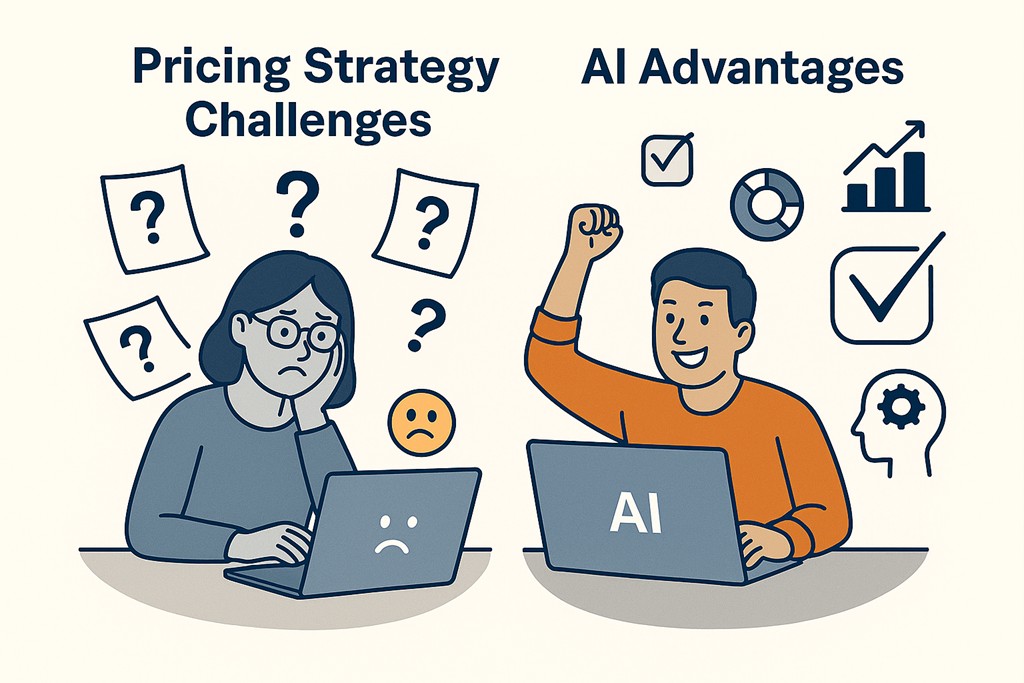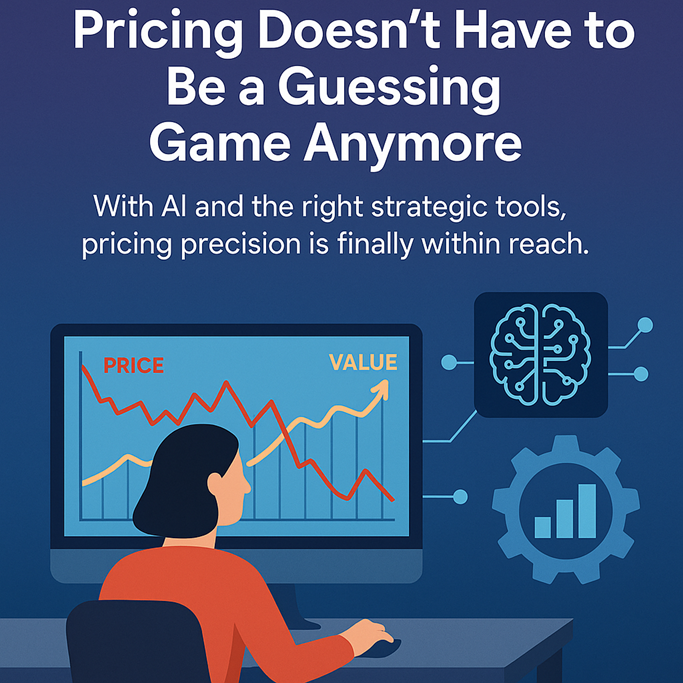With AI and the right strategic tools, pricing precision is finally within reach.
The Price–Value Gap Is Still Strategy’s Achilles’ Heel
Pricing remains one of the most delicate levers in business strategy. Raise prices too high, and customers balk. Keep them too low, and you erode margin or inadvertently signal low value. Too often, companies default to across-the-board discounts or arbitrary increases—because pricing decisions feel like a leap of faith.
But they don’t have to. When price is treated as a reflection of perceived value, it becomes much more manageable—and far more strategic. That’s especially true when modern AI tools are combined with the right strategic frameworks. Suddenly, pricing strategy isn’t about risk—it’s about clarity, targeting, and confidence.
Perceived Value Is the Foundation
In many complex B2B markets, actual pricing data is hard to find—and rarely tells the whole story. What matters more is how customers perceive your price relative to the value they believe they’re getting. That’s why our perceived value analysis has long been a practical proxy for evaluating pricing strategy.
AI enhances this process by gathering publicly available data and customer sentiment signals—revealing how your pricing is perceived versus competitors. It doesn’t matter if a rival’s product actually costs more or less. What matters is whether your customer believes it’s worth it.

Not All Customers Value the Same Things
Another common pricing mistake? Treating your entire customer base as one homogeneous group. In reality, segments vary widely in what they value and what they’ll pay for. Some seek stripped-down functionality. Others value high service levels, strategic advice, or customized delivery.
That’s where needs-based segmentation comes in. By clearly identifying what different segments prioritize, you can tailor value propositions and pricing models to each one—charging more for higher-value offers and less where appropriate. AI helps simulate these tradeoffs, quickly generating segment-specific scenarios based on prior strategic inputs.
Precision Pricing, Right Down to the Account Level
Once you’ve built your segmentation and value propositions, pricing execution becomes more precise. AI can synthesize information from websites, reports, and CRM data to predict which segment an individual account falls into, even if they’re new or lightly engaged. That enables targeted pricing decisions—from holding firm to selectively discounting based on strategic fit.
You can even forecast how pricing moves will affect market share or profitability before rolling them out. And when macro factors like tariffs shift, AI helps brainstorm options and communicate them with transparency.
AI Multiplies Strategic Intelligence—It Doesn’t Replace It

Every effective pricing strategy still starts with people. AI doesn’t replace strategic thinking—it multiplies it. When paired with the right tools and frameworks, it becomes a force multiplier: scanning the horizon, simulating outcomes, and helping you act faster and smarter.
The days of pricing on instinct alone are over. The teams that win will be those who use AI and strategy together to close the price–value gap—with confidence.

 Mary Abbazia
Mary Abbazia Tom Spitale
Tom Spitale Sean Welham
Sean Welham